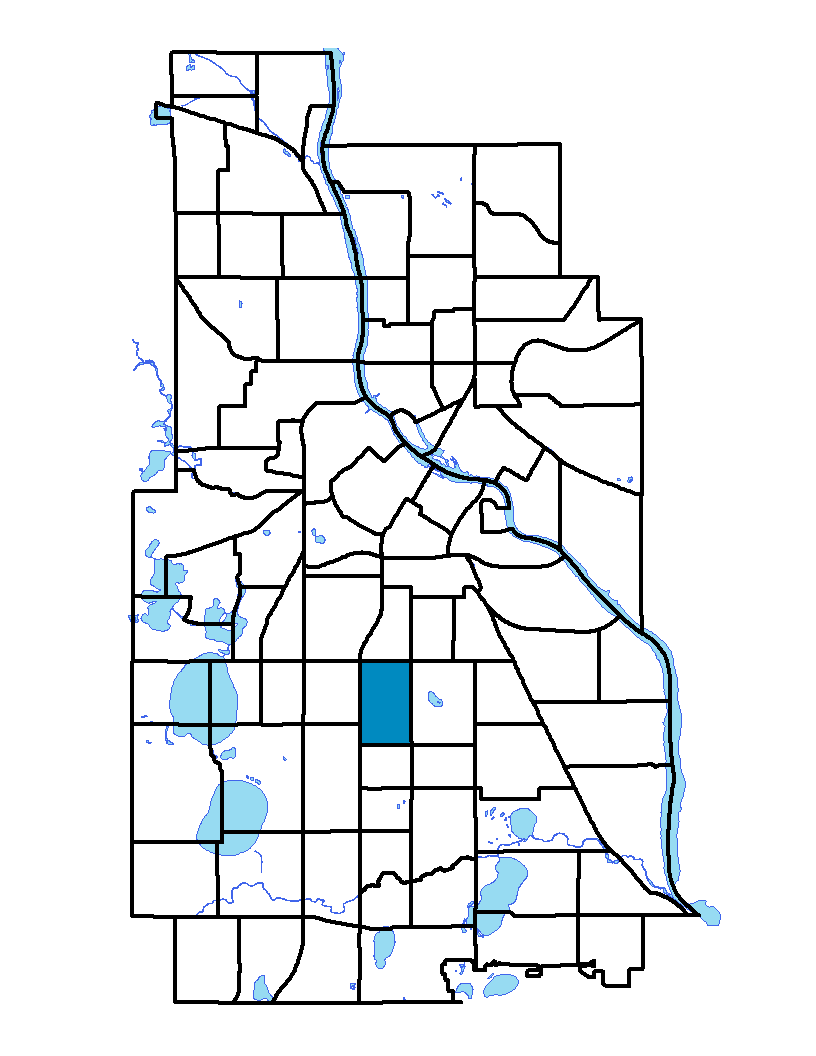"Compare Neighbordhoods" feature is not available in the archived version.
Central
Central neighborhood is named after Minneapolis Central High School, one of the city's largest schools, built in 1878 and eventually razed. The neighborhood is bordered by Lake Street on the north and 38th Street on the south. Interstate 35W is the western extent and Chicago Avenue is the eastern extent. This is a residential neighborhood, where single-family dwellings are interspersed with multifamily low-rise buildings.
To learn more about the neighborhood association visit: www.thecentralneighborhood.com
Indicator Details
| Indicators | Primary Domain | Indicator Value |
Rank |
Tier |
|---|---|---|---|---|
| Tree Cover | Natural Areas | 24.1% | 81 | Bottom |
| Violent Crime | Health Systems and Public Safety | 142.9 | 81 | Bottom |
| Adult Educational Attainment | Educational Opportunities | 70.1% | 79 | Bottom |
| Access to Parks and Open Space | Natural Areas | 0.8% | 78 | Bottom |
| Residential Proximity to Traffic | Environmental Hazards | 35.4% | 76 | Bottom |
| Access to Mainstream Financial Services | Economic Health | 42.0% | 75 | Bottom |
| Blood Lead Levels in Children | Housing | 9.8% | 75 | Bottom |
| Voter Participation | Social Cohesion | 16.2% | 71 | Bottom |
| Travel Time to Work | Employment Opportunities | 23.8 minutes | 71 | Bottom |
| Public Assisted Households | Employment Opportunities | 39.0% | 67 | Bottom |
| Excessive Housing Cost Burden | Housing | 38.1% | 64 | Bottom |
| Vacancy Rates | Housing | 10.5% | 62 | Bottom |
| Motor Vehicle Collisions | Health Systems and Public Safety | 12 | 59 | Bottom |
| Toxic Releases from Facilities | Environmental Hazards | 35.4% | 58 | Middle |
| Proximity to Superfund Sites | Environmental Hazards | 38.0% | 55 | Middle |
| Pedestrian Connectivity | Transportation | 120.2 | 52 | Middle |
| Preschool Enrollment | Educational Opportunities | 44.0% | 50 | Middle |
| Employment Rate | Employment Opportunities | 69.0% | 43 | Middle |
| Age of Housing | Housing | 85.7% | 42 | Middle |
| Low Birth Weight | Health Systems and Public Safety | 7.0% | 41 | Middle |
| Household Transportation Costs | Transportation | 16.7% | 40 | Middle |
| Residential Mobility | Social Cohesion | 80.4% | 39 | Middle |
| Local Business Vitality | Economic Health | 55.8% | 37 | Middle |
| Reading Proficiency | Educational Opportunities | 9.7% | 31 | Middle |
| Business Retention | Economic Health | 3.1% | 31 | Middle |
| Food Desert | Neighborhood Characteristics | 100.0% | 31 | Middle |
| Long-Term Unemployment | Employment Opportunities | 4.6% | 30 | Middle |
| Transit Accessibility | Transportation | 380.8 | 28 | Top |
| Walkability | Neighborhood Characteristics | 70 | 25 | Top |
| Chronic School Absence | Health Systems and Public Safety | 40.3% | 20 | Top |
| Preventable Hospitalizations | Health Systems and Public Safety | 1.6 | 20 | Top |
| Commute Mode Share | Transportation | 38.8% | 18 | Top |
| Offsite Alcohol Outlets | Neighborhood Characteristics | 1 | 6 | Top |
| Proximity to Brownfield Sites | Environmental Hazards | 0.0% | 1 | Top |
| School Proximity to Traffic | Environmental Hazards | 0.0% | 1 | Top |
| High School Graduation Rate | Educational Opportunities | -% | - | Data N/A |
| School Readiness Scores | Educational Opportunities | -% | - | Data N/A |

